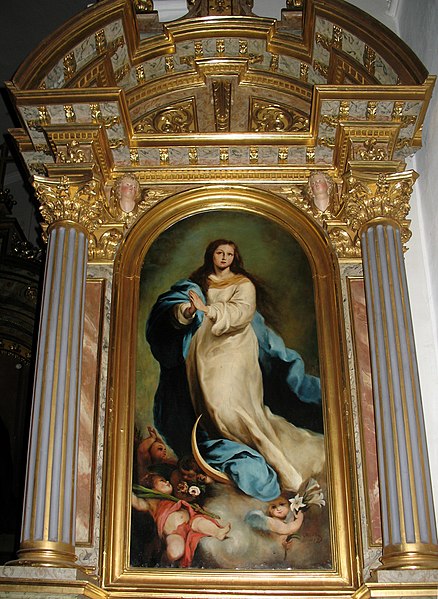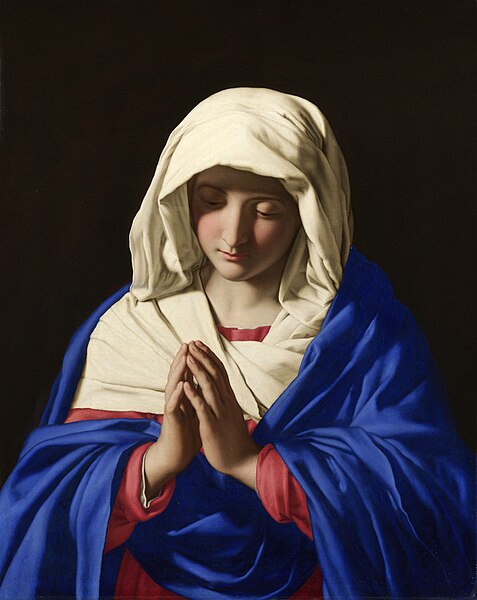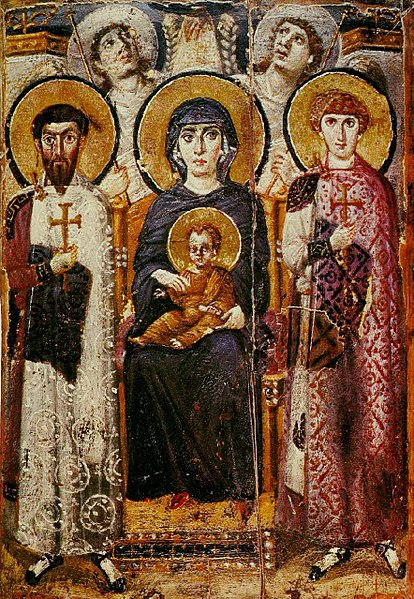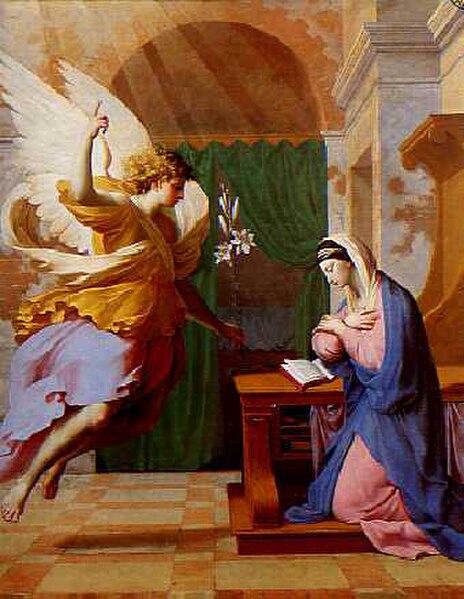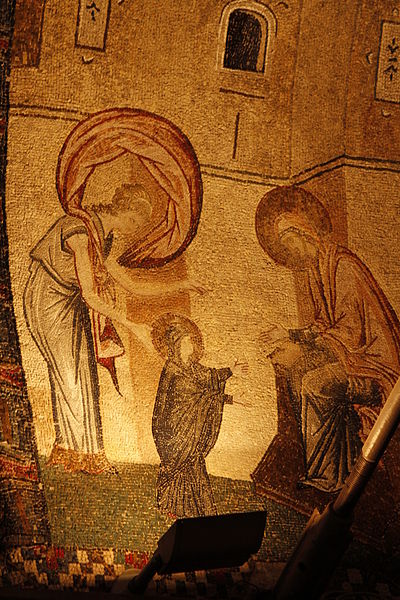The Immaculate Conception is the belief that the Virgin Mary was free of original sin from the moment of her conception. It is one of the four Marian dogmas of the Catholic Church. Debated by medieval theologians, it was not defined as a dogma until 1854, by Pope Pius IX in the papal bull Ineffabilis Deus. While the Immaculate Conception asserts Mary's freedom from original sin, the Council of Trent, held between 1545 and 1563, had previously affirmed her freedom from personal sin.
The Immaculate Conception (1767–1769) by Giovanni Battista Tiepolo
Altar of the Immaculata by Joseph Lusenberg, 1876, representing Our Lady of the Immaculate Conception, at Saint Antony's Church, Urtijëi, Italy
Our Lady of Lourdes's 9th apparition, 25 February 1858, by Virgilio Tojett (1877), after Bernadette Soubirous' description. Soubirous claimed the Lady identified herself as the "Immaculate Conception".
The procession of the Quadrittu of the Immaculate Conception taken on December 7 in Saponara, Sicily
Mary was a first-century Jewish woman of Nazareth, the wife of Joseph and the mother of Jesus. She is a central figure of Christianity, venerated under various titles such as virgin or queen, many of them mentioned in the Litany of Loreto. The Eastern and Oriental Orthodox, Church of the East, Catholic, Anglican, and Lutheran churches believe that Mary, as mother of Jesus, is the Mother of God. Other Protestant views on Mary vary, with some holding her to have lesser status.
The Virgin in Prayer, by Sassoferrato, c. 1650
Virgin and Child with angels and Sts. George and Theodore. Icon, c. 600, from Saint Catherine's Monastery
The Annunciation by Eustache Le Sueur, an example of 17th century Marian art. The Angel Gabriel announces to Mary her pregnancy with Jesus and offers her white lilies.
The Virgin's first seven steps, mosaic from Chora Church, c. 12th century


